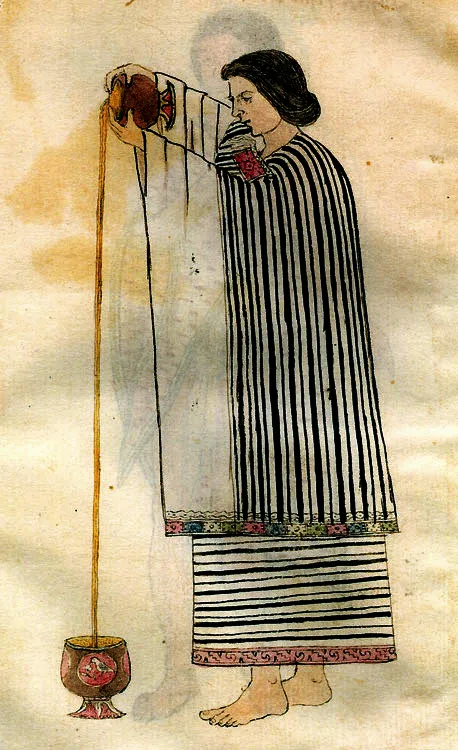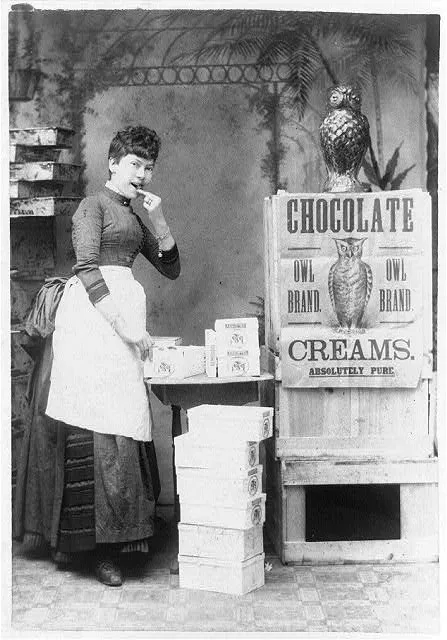A Brief History of Chocolate in the United States
Eating chocolate is a relatively new innovation
/https://tf-cmsv2-smithsonianmag-media.s3.amazonaws.com/filer/79/da/79da64da-018b-49f2-b590-8b2e8bc62f9e/chocolate.jpg)
Chocolate goes back a long way in America.
The cacao bush is native to South America, but people have been enjoying its flavorful beans in Central and North America for centuries. Join us for a timeline of chocolate’s tasty history.
1400-1100 B.C. Chocolate fruit is used to make alcohol in Central America
The pulp of the cacao fruit was used by the Olmec people to make an alcoholic drink, according to researchers who examined pottery excavated from a site in Puerto Escondido, Honduras. “This development probably provided the impetus to domesticate the chocolate tree and only later, to prepare a beverage based on the more bitter beans,” one of the study’s authors said in a Penn Museum press release. “An alcoholic beverage from the pulp, carrying on this ancient tradition, continues to be made in parts of Latin America.”
The actual origins of the practice of eating the seeds carried by the chocolate fruit–cacao beans–remains a mystery. However, later Mesoamerican civilizations such as the Aztec and the Maya drank beverages prepared from cacao beans, foaming the drinks by pouring them from container to container, writes J.S. Green in Pre-Columbian Foodways: Interdisciplinary Approaches to Food, Culture, and Markets in Ancient Mesoamerica.

900-1200 A.D. Drinking chocolate comes to North America
Archaeologists working in New Mexico’s Chaco Canyon have found remnants of cacao in 1,000-year-old vase fragments that were once used by the Anasazi people. About 1,000 Anasazis lived in the Chaco Canyon settlement. This finding provided evidence for a long-hypothesized, 2,000-kilometer long trading route that stretched from New Mexico to Central America, according to Science. University of New Mexico archaeologist Patricia Crown, who worked on the Chaco Canyon study, told Science that the Anasazi “imported other exotic items from Mexico, such as live scarlet macaws and copper bells.”
Only some of the people who lived in Chaco Canyon would have gotten to enjoy drinking chocolate, Crown told Science: “Chocolate was an expensive delicacy enjoyed by few during elaborate rituals.”
1600s-1700s A.D. European colonists begin drinking chocolate
Chocolate in the colonies dates back at least to the winter of 1667-1668, writes James F. Gay in Chocolate: History, Culture, And Heritage, “in the diary of Massachusetts Bay’s mint-master John Hull.” Hull had noted in his diary "the loss of “our ship Providence… cast away on the French shore… [carrying]... cocoa.”
Soon, along with coffee and tea, chocolate was a common drink in colonial America, writes Frank L. Clark in Chocolate. Over time, the comparative prices of these three drinks fluctuated–but chocolate in particular was more a commonplace drink than it ever was in Europe, writes Gay. For this reason, he writes, colonial America was on the cutting edge of chocolate production.
However, the drinking chocolate colonists enjoyed doesn't strongly resemble modern cocoa: it was much thicker and had a much stronger chocolate flavor, writes Rodney Snyder for the Colonial Williamsburg website. In part, this is because it was made from scraped or melted chocolate rather than cocoa powder. The drinking chocolate of this time also didn't contain sugar.
Mid-1800s A.D. Eating chocolate arrives in the world
Americans weren’t responsible for one of chocolate’s biggest advances, Snyder writes. Advertisements for “solid eating chocolate” appear in mid-1800s newspapers, he writes, but the chocolates “were not well received by the public because of their coarse and gritty texture.” Swiss innovators developed the first appealing eating chocolate in the 1870s, and the rest was history.
